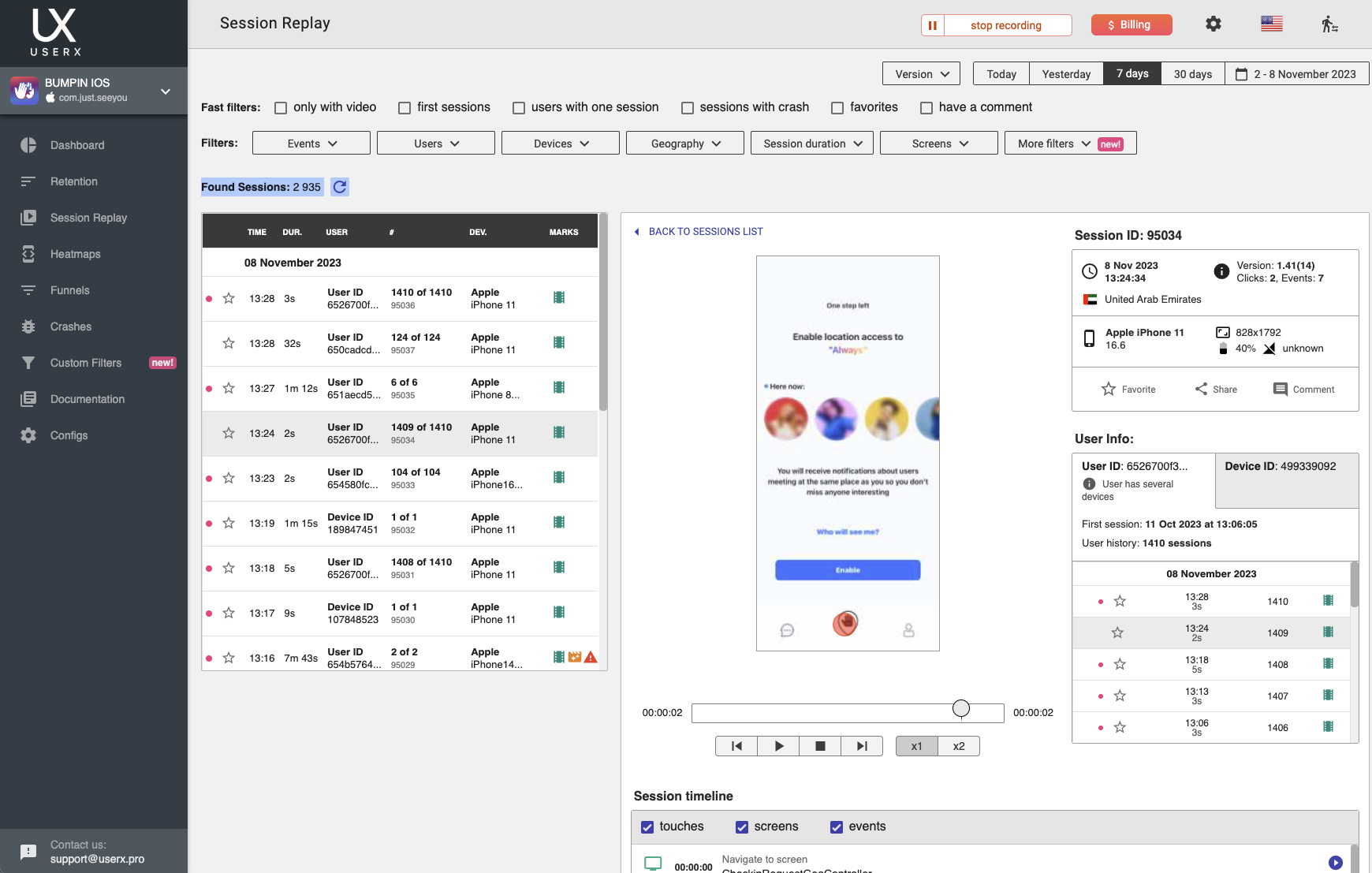Table of Contents
Introduction
Why do we tap, swipe, and scroll the way we do? The answer lies in understanding mobile user behavior - a compelling blend of actions, habits, and choices made by smartphone users. This behavior is not just about the apps we use, but also encompasses the mobile user activities and smartphone user habits that have become integral to our daily routines. From casual browsing to intense gaming, every interaction offers insights into the evolving relationship between users and their mobile devices. By unraveling these patterns, we can uncover the hidden dynamics of mobile engagement, shaping how applications and digital services are designed and marketed.

Example of User Behavior
A classic example of mobile user behavior is the morning routine of checking social media or news apps. This pattern, a part of many people's daily lives, reflects a significant mobile browsing behavior. Another example is the use of fitness apps by health-conscious individuals, illustrating a specific mobile user pattern. These behaviors vary greatly among users, influenced by factors like age, lifestyle, and personal interests. Some might habitually use navigation apps for daily commuting, while others might engage in online shopping through their smartphones. Each of these instances showcases the diverse and intricate nature of how we interact with our mobile devices, underlining the significance of understanding these behaviors for tailoring user experiences.
How to Track User Behavior in Your Mobile App
Tracking user behavior in mobile apps is crucial for understanding and enhancing user experiences. One effective method is utilizing analytics platforms like UserX, which provide detailed insights and growth-oriented strategies. Key features of UserX include session recordings, offering a visual playback of user actions on Mobile, and heatmaps, which graphically represent areas of high and low engagement within the app. Additionally, conversion funnels in UserX help identify stages where users drop off, thus pinpointing areas for improvement. These tools are instrumental in analyzing mobile user Interactions, allowing developers to refine app design and functionality based on actual user behavior data.

Identifying User Behavior Patterns
Identifying and analyzing user behavior patterns are key to enhancing mobile user experiences. Advanced techniques include analyzing smartphone usage trends and conducting a comprehensive mobile user experience analysis. Tools like UserX play a pivotal role in this process. UserX's capability to record app data provides invaluable insights into user interactions. Importantly, this data recording is designed to minimize impact on app performance and prioritizes user data privacy. By leveraging such analytics, developers and marketers can uncover detailed user behavior patterns, enabling them to tailor their apps more effectively to meet the needs and preferences of their user base.
Tracking User Activity on Apps
To track user activity on apps while ensuring data privacy and security, follow these steps:
- Choose the Right Tool: Opt for a tool like UserX known for secure data handling.
- Set Up Data Collection: Implement UserX's SDK to start collecting data on mobile app user dynamics and mobile user engagement trends.
- Enable Data Encryption: Ensure UserX’s data encryption features are activated for secure session recording.
- Review and Analyze Data: Regularly check the collected data for insights into user behavior.
- Prioritize Privacy: Adhere to privacy laws and regulations, informing users about data collection and its purpose.
UserX's approach to data encryption and secure session recording provides a trustworthy method to understand user activity without compromising user privacy.
Conclusion
Understanding mobile user behavior is crucial in today's digital world. It enables developers and businesses to create more engaging, user-friendly apps that meet the evolving needs of users. Platforms like UserX are instrumental in this process, offering advanced tools for analyzing and improving user experience. By leveraging the insights gained from UserX's detailed analytics, such as session recordings and heatmaps, developers can make informed decisions to enhance app design and functionality, ultimately leading to a more satisfying and effective user engagement. In essence, comprehending and utilizing mobile user behavior data is key to success in the competitive app market.
FAQ
What is mobile user behavior?
Mobile user behavior refers to the patterns and actions of users when they interact with their smartphones, including app usage, browsing habits, and engagement trends.
Why is it important to understand mobile user behavior?
Understanding mobile user behavior helps in designing user-friendly apps and improving user experience, which is crucial for user retention and business success.
How can I track mobile user behavior in my app?
You can track mobile user behavior using analytics tools like UserX, which offer features like session recordings, heatmaps, and conversion funnels.
What are some common patterns in mobile user behavior?
Common patterns include frequent social media or news app checks, using navigation or shopping apps, and engagement in health or fitness-related activities.
How does UserX ensure data privacy and security in tracking?
UserX ensures data privacy and security through features like data encryption and secure session recording, adhering to privacy laws and regulations.
Can tracking user behavior improve app performance?
Yes, tracking user behavior can provide insights to improve app performance by identifying user needs and preferences, leading to more effective and engaging apps.
How does UserX impact app performance?
UserX is designed to minimize its impact on app performance, using advanced data collection algorithms and ensuring resource consumption remains low.



